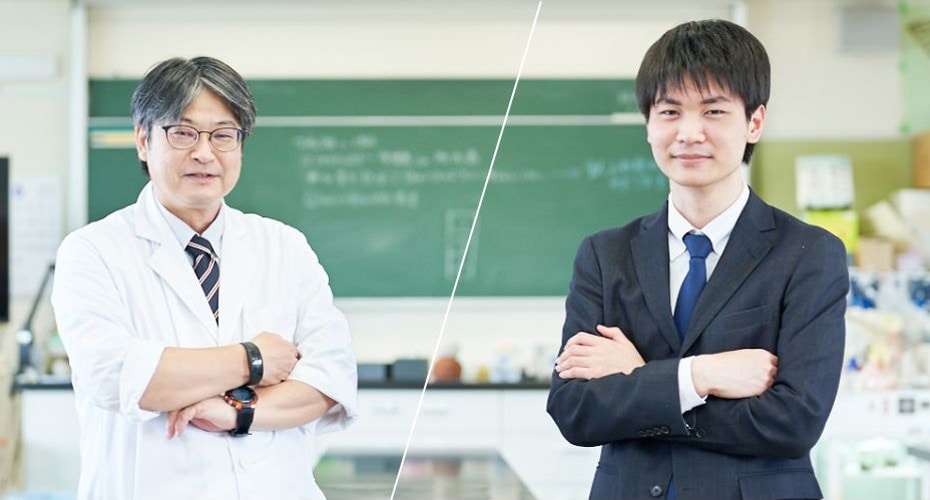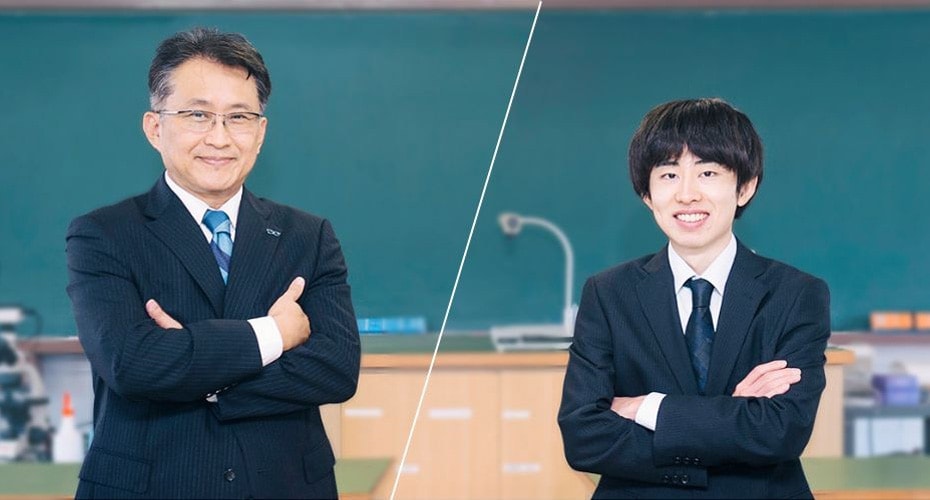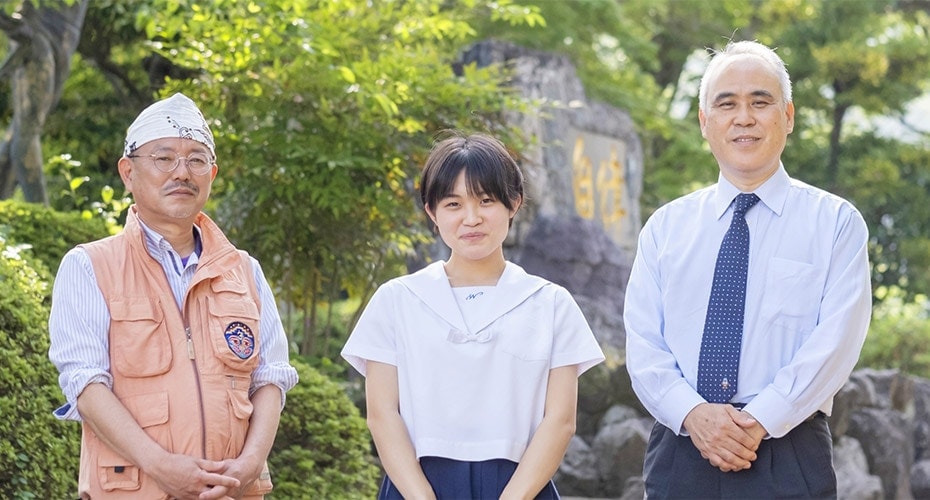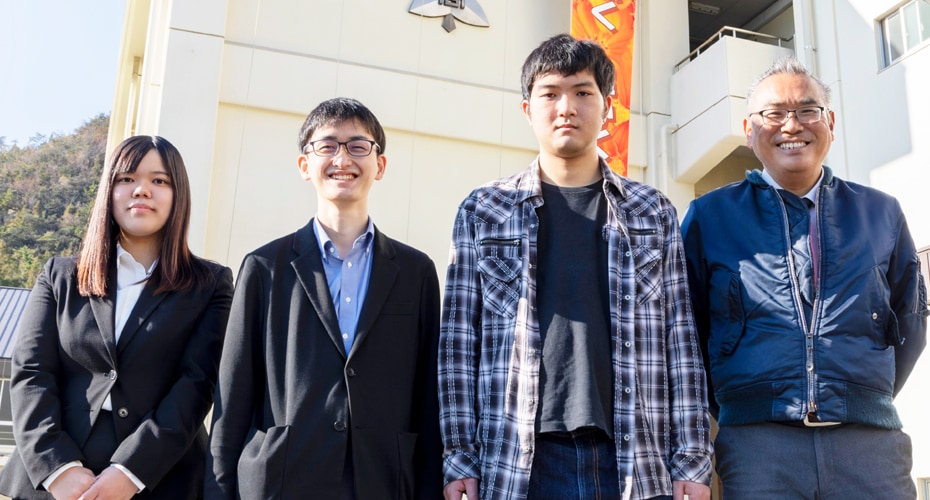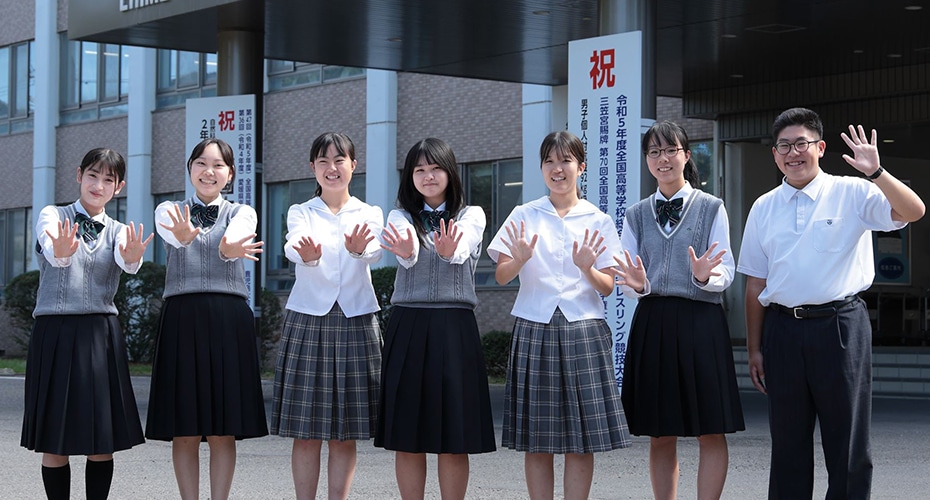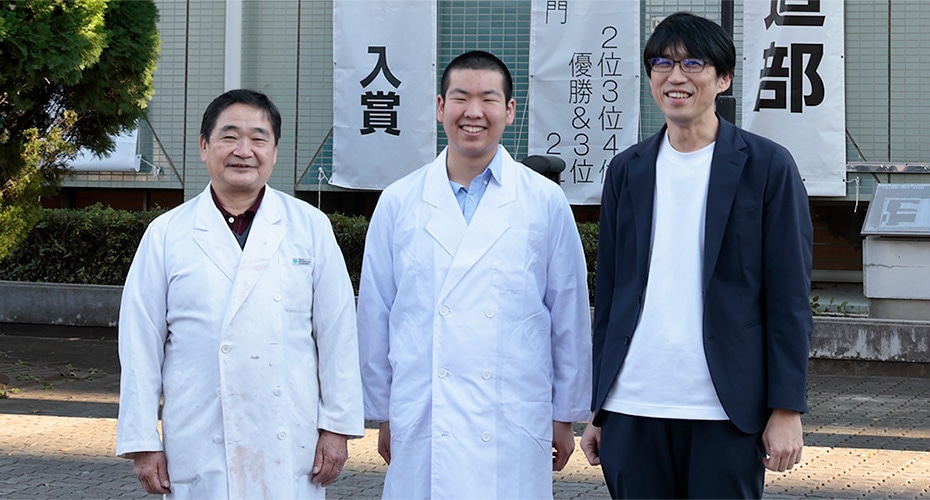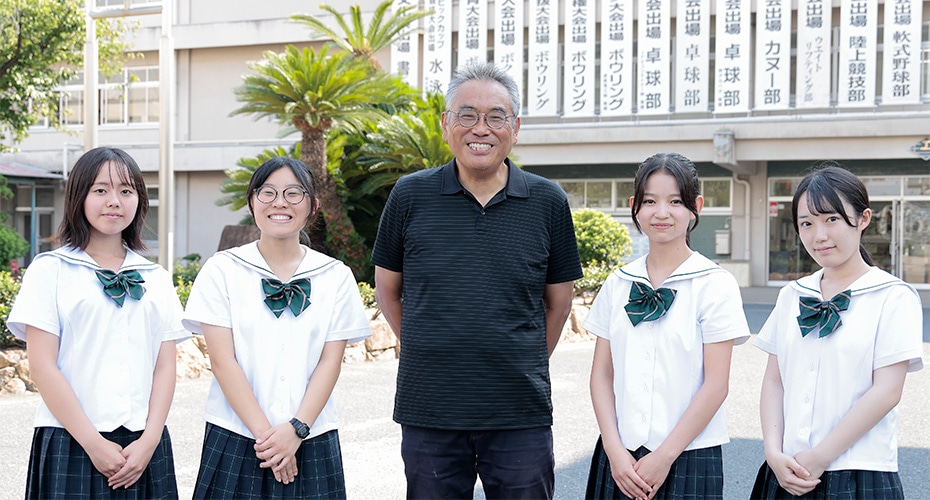
Okayama Prefectural Tamano High School was established in 1939, and is a general high school with more than 80 years of history and tradition. A credit system was introduced in 2021, and the curriculum for
second- and third-year students was organized into five course groups: Natural sciences, Medical sciences, Humanities, Regional studies and Art sciences.
The school continues to actively present and disseminate its research results outside the school through participating in the Youngsters' Science Festival, broadcasting the Electron Microscope Micro World Quiz live together with the certified NPO Organization Pocket Support and more.
Today, we are talking with physics professor Manabu Fujita and three alumni who support the activities of these students, who will discuss their research activities while they were in school, memories related to electron microscopes, research they're conducting at university, their career plans after graduation and more.
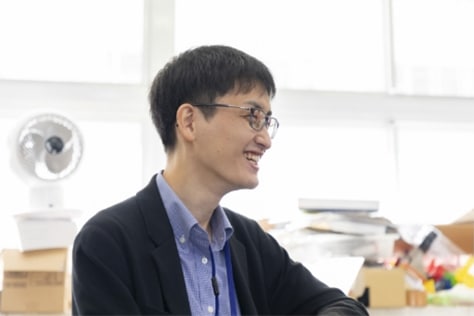
Daiki Hoshishima, 4th Year, Interdisciplinary Faculty of Science and Engineering, Shimane University
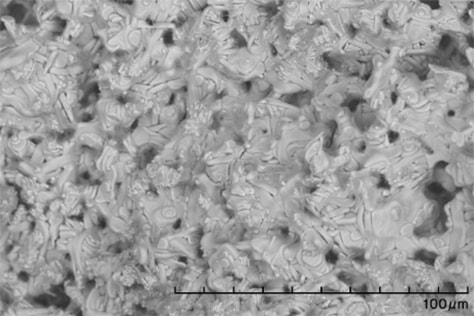
Looking at synthesised crystals during research on yttrium based superconductors
Hoshishima : In high school, I made yttrium-based oxide superconductors and used an electron microscope to observe their surfaces. While it didn't lead to any big discoveries, they did help shorten the production process.

Tomoka Kushi, 4th Year, Faculty of Engineering and Design, Kagawa University
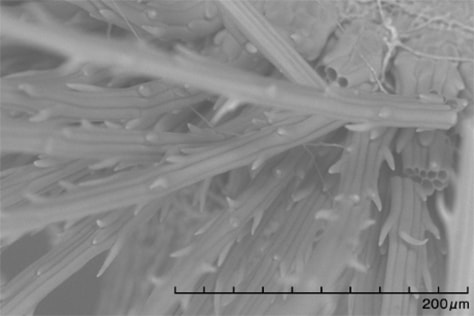
Electron microscope image of a section of dandelion fluff
Kushi : I was doing research on the topic of reproducing the structure and movement of dandelion fluff.
Electron microscopes allowed me to observe the finer details of the fluff structure. The realization that the insides were hollow and that they had numerous small thorns growing on them made quite an impact on me.
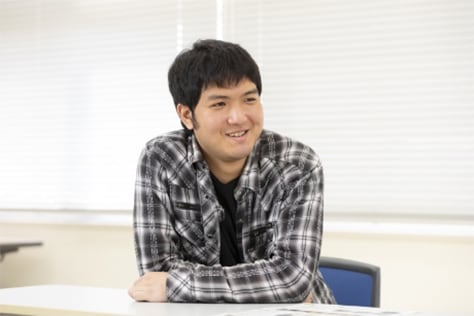
Keita Kashitani, 4th Year, Faculty of Engineering, Okayama University of Science
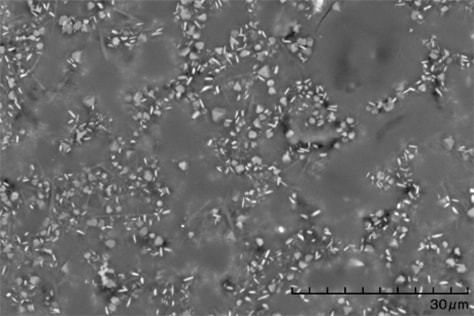
Electron microscope images of red striated area of Bizen ware
Kashitani : I was researching changes in coloring when firing Bizen ceramic ware. I experimented with two traditional brown colors in particular, goma and hidasuki, and used an electron microscope to observe changes to the crystals. I started this research because Mr. Fujita told me about the research topics others were working on, which made me want to pursue them further.
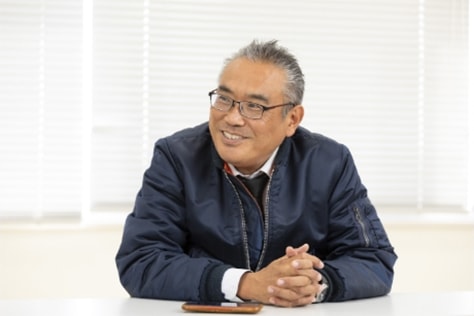
Manabu Fujita, Science (Physics) Teacher
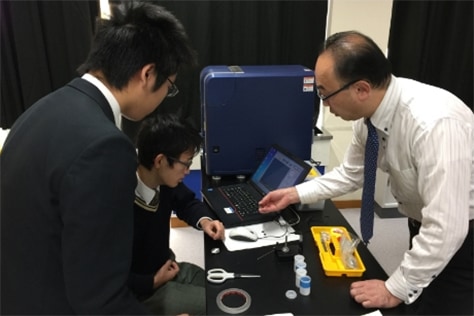
An employee of Hitachi High-Tech explains the electron microscope
Fujita : I originally encouraged students to undertake research activities because I wanted to do something together with them. I thought that it would be good if, in addition to just studying at school, they could make use of what they studied, gaining experience in expressing that knowledge by holding presentations and similar. This ended up taking the form of research activities. I actually graduated from Tamano High School as well, and the school had the tradition of engaging in research activities even then, such as in winning the Japan Students Sciences Awards. When I was thinking about what I could do as a teacher, I ended up getting the chance to borrow a tabletop electron microscope from Hitachi High-Tech, thanks to a professor from Chubu University who came to talk about how to give science presentations.
Hoshishima : I've actually been taking part in science classes with Mr. Fujita since I was in elementary school. Even after entering high school, when we said that we wanted to do something, he would take us to university laboratories and gave us time to carry out our experiments. It was thanks to him that I was able to make progress on my research into superconductors.
Fujita : At Tamano High School, we invite elementary and junior high school students to come talk about their research and teach them how to use electron microscopes. Daiki and Keita often attended my classes even when they were still in elementary school.
Kashitani : I started researching Bizen ceramic ware in my second year of high school. Mr. Fujita applied for presentations outside the prefecture and took me to various places. The first time was a trip to Odawara, in Kanagawa. After that, I went to Nagoya and Osaka together with Daiki, and they ended up being valuable experiences for learning about the world outside of school.
Kushi : When I said that I wanted to go to a presentation of the Botanical Society of Japan in Chiba, he told me to apply and go. However, the day before was our school's sports festival, and I remember leaving school in my gym clothes just so I could make it in time.
Fujita : That was the last sports festival you'd have as a high school student, and I felt bad rushing you.
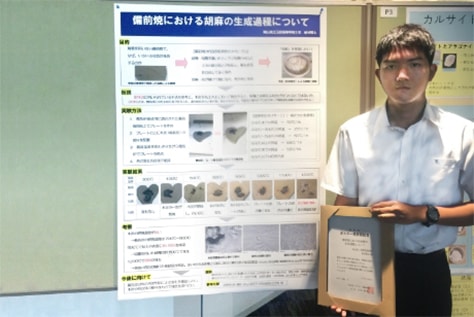
Receiving an Award for Poster Presentations at the Plasma and Nuclear Fusion Society
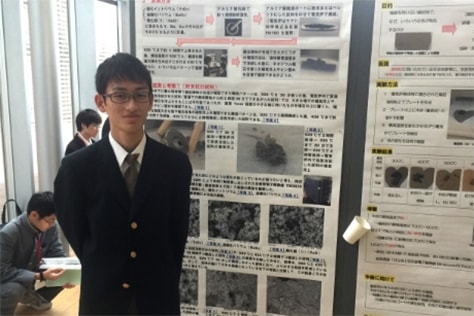
The Physics Society Junior Session
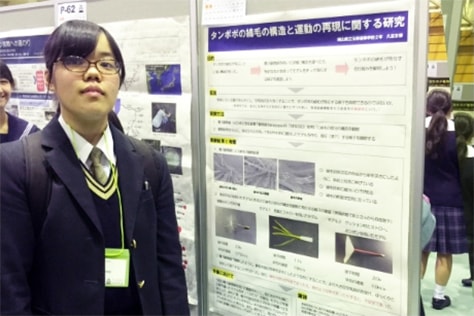
Research poster presentation meeting of the Botanical Society of Japan
Kashitani : It wasn't until then that I realized how much I like to pursue things that interest me. I think it's because of that realization that I am still continuing with my research at university. I'm currently researching how to utilize augmented reality technology in daily life.
Hoshishima : Firstly, I was able to overcome my fear of public speaking. And, similar to Keita, I learned that I like performing experiments with my own two hands. Thanks to that, although it isn't in the field of superconductivity, I am enjoying my graduate research on semiconductors. I use electron microscopes in that research as well, so the experience I gained in high school has been quite useful.
Kushi : I learned that while research is important, the ability to present is just as important. I was able to pass my university entrance exam because my research results poster presentation was well received. I believe the reason I get praise for my presentation skills in the laboratory is because I was able to hone those skills through numerous presentations in my high school days.
Fujita : What I want students to acquire through their research and presentations is confidence, both in themselves and their activities. I also want them to develop the honesty to admit and accept inadequacies or mistakes pointed out by others, and the strength to endure. Sadly, I am still rather lacking in those departments. I hope that, unlike school tests where answers are prepared in advance, they can gain these skills and work on problems without answers.
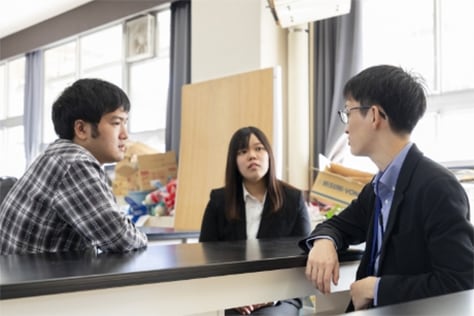
The three sit in their old physics classroom to discuss the latest news.
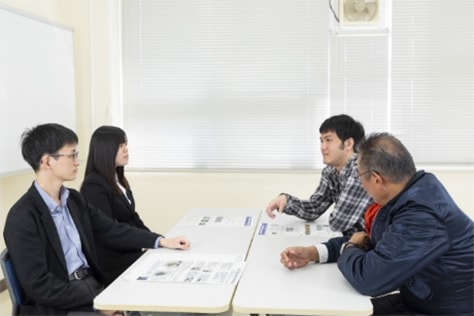
The discussions with Mr Fujita never end!
Kushi : After graduating from university, I will be working for a chemical manufacturer. That has always been a dream of mine. I believe that the ability to carry out trial and error activities and to present in front of others, both of which are acquired through engaging in research, remain useful even in university and after entering society. As such, it is my hope that those who are currently engaged in research activities in high school continue to work hard toward their future.
Hoshishima : Giving presentations at various places outside of school while I was attending Tamano High School was a great experience for me. That said, I think it's important that it is something you yourself want to do. It may make Mr. Fujita's workload a bit harder, but I would encourage younger students to actively take on challenges.
Kashitani : Presentation events were great not only because of the experience I got in presenting my own research, but also because I was able to listen to the presentations of others. When I would give a presentation, there were certainly times when I would receive harsh criticism and opinions that would leave me feeling down, but it was enjoyable to listen to the voices of others and repeat the presentations without giving up. I hope everyone has the chance to experience such an atmosphere.
Fujita : Even now, some students are conducting research at Tamano High School using electron microscopes. Though the devices they use are more advanced than those used by the three we have gathered here today. That said, simply having good tools is not enough. I want to continue to convey to students the value in having such an environment and the thought that Hitachi High-Tech puts into lending devices and hands-on training.
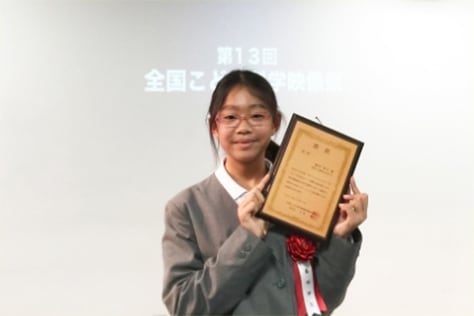
Saya Fujita, Okayama Prefectural Kurashiki Amaki Senior High School, Graduated 2021
1st Year, School of Engineering, Kyushu Institute of Technology
I first encountered electron microscopes in fifth grade, when I was doing research on the small animals mixed in with chirimen (dried young sardines), called "chirimen monsters." I remember just how amazed I was to be able to see details right down to the compound eyes of the small crabs and shrimp mixed in with the dried young sardines. I first learned about electron microscopes when my father, who is a high school physics teacher, told me about them. Later, I used electron microscopes throughout the research activities I undertook in the science clubs I belonged to in junior high and high school. Now at university, I am studying space engineering, which includes topics such as rockets. If you get the opportunity to use an electron microscope, don't just use it for research, but also take the chance to look at different things that interest you, and that will help you discover the path you want to follow.

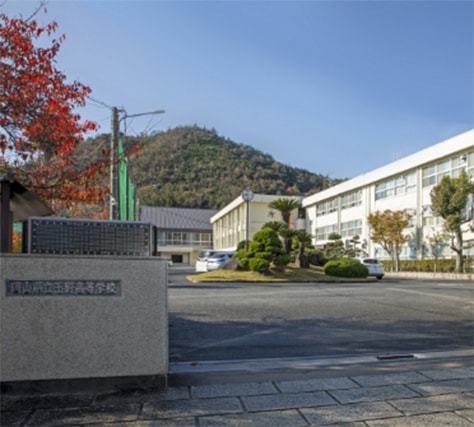
At Tamano High School, classes are developed based on individually optimized learning using ICT equipment and independent inquiry-based learning for each student. The school has been certified as an excellent school with regard to the school computerization accreditation by JAET.* It aims to develop human resources who can contribute to society by learning how to be intellectually inquisitive, think, utilize information, output information and collaborate, with research activities being an important part of this policy.
* JAET : Japan Association for Educational Technology
